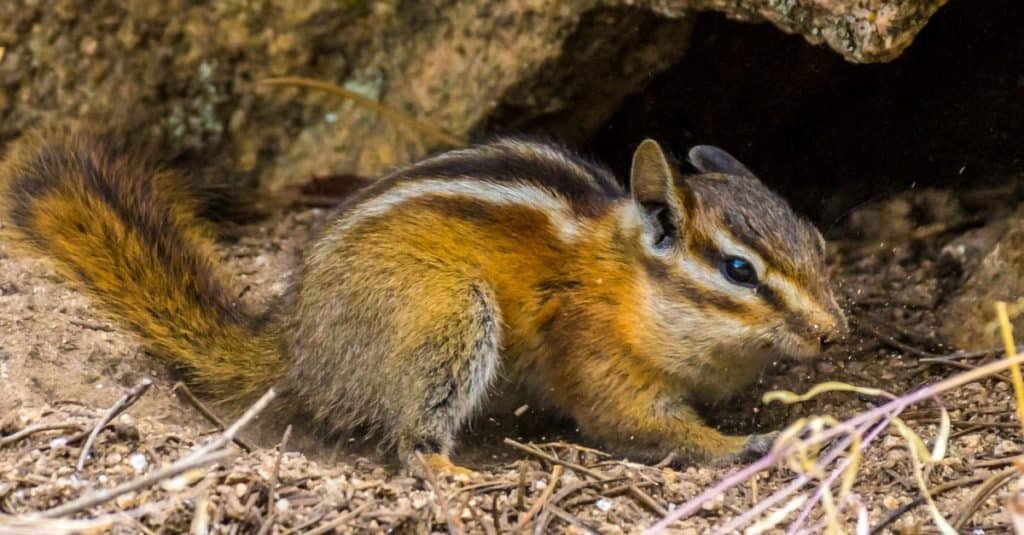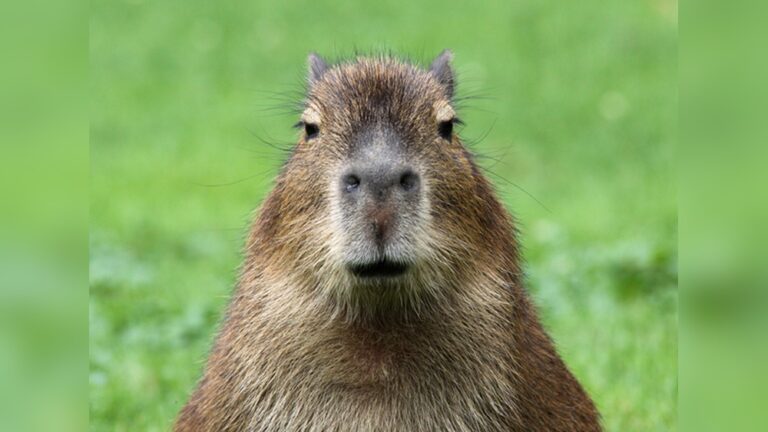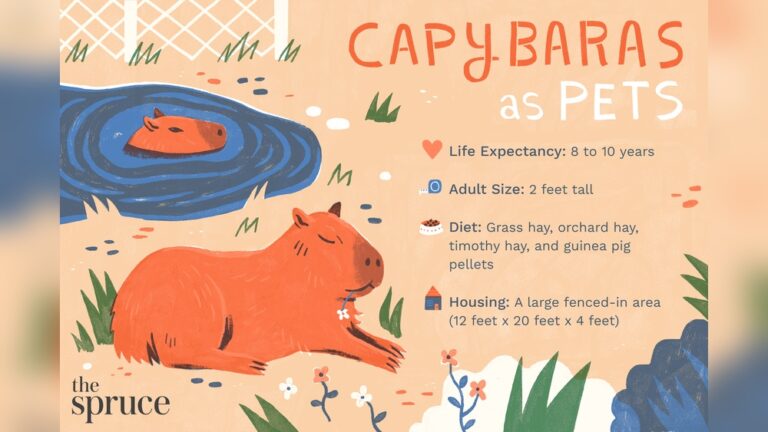Where Do Chipmunks Nest: Discover Their Secret Homes Today!
Have you ever spotted a chipmunk darting through the trees and wondered, “Where do chipmunks nest?” You’re not alone. These tiny, quick creatures hide their homes so well that it’s easy to miss them.
But understanding where chipmunks make their nests can reveal fascinating secrets about their behavior and lifestyle. Keep reading, and you’ll discover exactly where these little animals live, why they choose those spots, and what makes their nests so special. By the end, you’ll see chipmunks in a whole new light.
Chipmunk Habitat
Chipmunks live in places that keep them safe and provide food. Their homes, or nests, are built carefully to protect them from weather and predators. Understanding where chipmunks make their nests helps us learn about their habits and needs.
They pick spots that offer shelter and easy access to food. These small animals are good at finding places that suit their lifestyle well.
Preferred Environments
Chipmunks like woodlands with many trees and bushes. They also choose areas with lots of ground cover. This cover hides them from birds and bigger animals. Gardens and parks with shrubs often attract chipmunks too.
They avoid open spaces with little protection. Nearby water sources are helpful but not required. They prefer places with soft soil to dig their nests.
Common Nesting Locations
Chipmunks often dig burrows underground. These tunnels can be several feet long. Inside, they create small chambers for sleeping and storing food. Sometimes, they use hollow logs or tree roots as nests.
They also nest in piles of leaves or under rocks. These spots provide warmth and safety during cold weather. Each nest has several entrances for quick escape.

Credit: msodanoillustration.com
Types Of Chipmunk Nests
Chipmunks build different types of nests depending on their needs and environment. Their nests provide safety, warmth, and a place to store food. Understanding these nest types helps us learn more about chipmunk behavior and habitats.
Burrow Nests
Chipmunks often dig burrows underground. These burrows have tunnels leading to chambers for sleeping and storing food. The soil protects them from predators and weather. Burrow nests are common in wooded areas and gardens.
Tree Nests
Some chipmunks make nests in trees. They use leaves, twigs, and moss to build cozy homes in tree hollows or branches. Tree nests keep chipmunks safe from ground predators. These nests are usually higher off the ground.
Ground Nests
Ground nests are simple and built on the surface. Chipmunks gather leaves and grass to create a small, hidden shelter. These nests are easy to access and blend well with the surroundings. Ground nests help chipmunks stay warm and hidden.
Nest Construction Materials
Chipmunks build their nests using materials found in their natural surroundings. These materials help create a warm and safe home. The choice depends on what is nearby and easy to gather. Each material plays a role in comfort and protection from weather and predators.
Leaves And Grass
Leaves form a soft layer inside the nest. Chipmunks collect dry leaves to keep the nest warm. Grass adds extra softness. It also helps with insulation. These materials make the nest cozy for resting and raising young.
Twigs And Bark
Twigs provide structure to the nest. Chipmunks use small sticks to build walls or a base. Bark pieces add strength and cover. They protect the nest from wind and rain. Together, twigs and bark create a strong shell around the softer materials.
Other Natural Materials
Chipmunks sometimes use moss and feathers. Moss holds moisture and keeps the nest damp-free. Feathers add extra warmth and softness. Bits of animal fur or grass roots may also appear. These materials improve comfort and safety inside the nest.

Credit: a-z-animals.com
Nest Structure And Design
Chipmunks build nests that suit their small size and active lifestyle. Their nests are well-organized and designed for comfort and safety. Understanding the structure helps us appreciate how these tiny animals live and survive in the wild.
The nest design shows clever use of space and natural materials. Each part of the nest has a special role for the chipmunk’s daily life.
Chamber Layout
Chipmunk nests have several small chambers. One chamber is for sleeping, lined with soft leaves and grass. Another chamber stores food like nuts and seeds. This layout keeps their living space clean and organized.
Entrance And Exit Points
The nest has one or two small entrances. These openings are just big enough for chipmunks to pass through quickly. The entrances help chipmunks escape from predators fast. Sometimes, an exit leads to a hidden tunnel underground.
Safety Features
Chipmunks place their nests in hidden spots, like under roots or inside logs. The nest walls use dirt and leaves to blend into the environment. These features protect chipmunks from weather and danger. The small size of the nest also makes it hard for predators to enter.
Seasonal Nesting Behavior
Chipmunks change their nesting habits with the seasons. Their homes adapt to weather and food availability. Understanding these changes helps us know more about their lives.
Spring And Summer Nests
In spring and summer, chipmunks build nests above or below ground. They often choose hollow logs or burrows. These nests keep them safe from predators and harsh weather. The nests are lined with soft materials like leaves and grass. Females use these nests to raise their young. The warm months offer plenty of food near their nests.
Winter Preparations
As cold approaches, chipmunks gather food near their nests. They store seeds, nuts, and berries in small chambers. This food supply helps them survive the winter. Chipmunks make their nests warmer by adding more insulation. They seal entrances with dirt or leaves to keep cold air out. Preparing the nest is crucial for winter survival.
Hibernation Spots
Chipmunks do not hibernate deeply but enter a light sleep. They stay in their nests for long periods during winter. Their hibernation spots are usually underground burrows. These burrows protect them from freezing temperatures. The stored food inside helps chipmunks wake up and eat. Their nests provide safety and warmth during this time.
:max_bytes(150000):strip_icc()/__opt__aboutcom__coeus__resources__content_migration__mnn__images__2017__10__chipmunk_burrow-ce9daf0881024de0a84b9ca5c4acb78b.jpg)
Credit: www.treehugger.com
How Chipmunks Choose Nest Sites
Chipmunks pick their nest sites with care. They need a safe and comfortable place to live. Their choices depend on many things that help them survive and stay hidden.
Choosing the right spot is very important for chipmunks. The spot must protect them from danger and be close to food. They also look for places that are easy to dig and build nests.
Factors Influencing Location
Chipmunks look for soft soil to dig their nests. They prefer areas with plenty of leaves and plants. The soil must drain well to keep the nest dry. They often choose spots near rocks or tree roots for extra shelter.
Shade matters too. Chipmunks avoid open areas that get too hot. They want a cool place to rest during the day. These factors help chipmunks find the best home.
Avoiding Predators
Safety is a top priority for chipmunks. They avoid places where predators roam. Dense bushes and thick ground cover offer good hiding spots. Chipmunks use burrows with many exits to escape fast.
Nests are often hidden under logs or in hollow trees. These spots keep predators like hawks and snakes away. Staying out of sight helps chipmunks live longer.
Proximity To Food Sources
Chipmunks pick nest sites close to food. They eat nuts, seeds, berries, and small insects. Having food nearby saves energy and time. It helps them gather food quickly and store it in their burrows.
They often nest near oak trees or berry bushes. This way, they can easily find food throughout the year. Being close to food keeps chipmunks healthy and strong.
Signs Of Chipmunk Nests
Chipmunks are small, busy creatures that build nests to live and store food. Spotting their nests can help you understand their habits and keep your garden safe. Signs of chipmunk nests are often subtle but clear once you know what to look for.
Identifying Burrow Entrances
Chipmunk nests start with burrows underground. These entrances are small, round holes about 2 to 3 inches wide. You might see loose soil or small piles of dirt near the holes. The edges of the burrow look smooth, not rough or torn. Burrow entrances often hide near plants or rocks for cover.
Tracking Chipmunk Activity
Chipmunks leave tracks near their homes. Look for tiny footprints in soft soil or mud. You may also notice small scratch marks or gnawed twigs around the area. Watch for frequent trips in and out of the burrow. Chipmunks often carry food items like nuts or seeds to their nests.
Common Nesting Areas In Gardens
Chipmunks prefer quiet, sheltered spots in gardens. They like to nest under bushes, logs, or stone piles. Garden edges with dense plants are favorite hiding places. They also dig near tree roots or under garden sheds. These areas offer safety and easy food access.
Protecting And Observing Chipmunk Homes
Chipmunks build cozy nests to live and raise their young. These homes are usually hidden under logs, rocks, or dense bushes. Protecting these nests helps chipmunks stay safe and healthy. Observing chipmunk homes can be fun and educational if done carefully. Respecting their space is key to keeping them safe and comfortable.
Minimizing Disturbance
Stay at a distance from chipmunk nests to avoid scaring them. Loud noises and sudden movements can stress chipmunks. Avoid touching or moving objects near their homes. Keep pets and children away from nesting areas. Quiet observation helps chipmunks feel secure and continue their daily activities.
Encouraging Natural Nesting
Leave natural debris like leaves and twigs around your yard. These materials provide good shelter for chipmunks. Plant native bushes or ground cover to offer more hiding spots. Avoid using pesticides or chemicals near nesting areas. Natural environments support chipmunks’ health and safety.
Ethical Observation Tips
Use binoculars to watch chipmunks from a safe distance. Observe during calm weather and daylight hours. Never try to feed chipmunks near their nests. Feeding can make them dependent on humans. Take photos quietly without flash to avoid startling them.
How Smart Pets Lover Can Help You with Where Do Chipmunks Nest
Learning from Chipmunks’ Nesting Habits
Understanding where chipmunks nest opens up wonderful opportunities to connect with nature and deepen our appreciation for these charming creatures. Observing the signs of chipmunk nests and recognizing their carefully chosen nest sites can be a rewarding way to practice patience and attentiveness—skills valuable for any pet parent or animal lover.
By noting the nest construction materials and seasonal nesting behavior, you can gain insight into how these little animals adapt to their environment, which parallels how we think about creating safe, comfortable spaces for our own pets. This knowledge nurtures a respectful curiosity and encourages responsible coexistence.
- Try identifying chipmunk nests in your backyard or local park by looking for signs discussed earlier.
- Consider how their nest structure and design provide protection and warmth, inspiring thoughtful habitat enrichment for pets.
For those eager to learn more or share observations, organizations like Smart Pets Lover offer a wealth of information on animal behavior and care. You can reach out to their community via their website or social media channels to exchange tips and stories. After all, where every wag, purr, and chirp tells a story, learning from chipmunks reminds us how every tiny home holds a world of wonder.
Frequently Asked Questions
Where Do Chipmunks Build Their Nests?
Chipmunks build nests underground in burrows or inside logs and shrubs. They prefer dry, sheltered places close to food sources. Their nests are lined with leaves, grass, and soft materials for comfort and warmth.
What Materials Do Chipmunks Use For Nesting?
Chipmunks use leaves, grass, moss, bark, and other soft plant materials. These materials help insulate their nests, keeping them warm and cozy. They gather items from their surroundings to create a secure and comfortable home.
How Deep Are Chipmunk Burrows Typically?
Chipmunk burrows can be 2 to 3 feet deep. They create complex tunnels with multiple entrances and chambers for nesting and storing food. The depth helps protect chipmunks from predators and harsh weather.
Do Chipmunks Reuse Their Nests Each Season?
Yes, chipmunks often reuse their nests each season. They maintain and repair the burrows for continuous shelter. Reusing nests saves energy and time, especially during colder months when survival is crucial.
Conclusion
Chipmunks build nests in cozy, hidden places like burrows and tree holes. They choose spots safe from predators and harsh weather. These nests keep them warm and protect their young. Knowing where chipmunks nest helps us understand their behavior better.
It also helps us respect their space in nature. These small animals live close to the ground and near trees. Watching chipmunks can be fun and teaches us about wildlife. Their nests are simple but serve their needs well. Nature has many small wonders like chipmunks’ homes.





